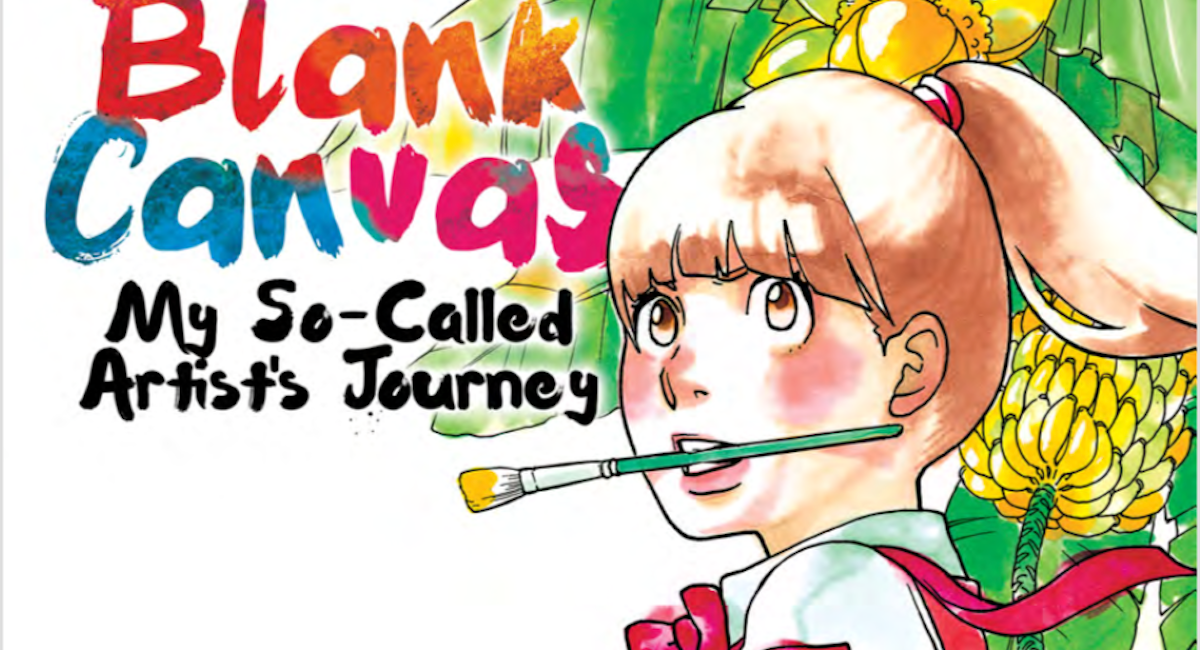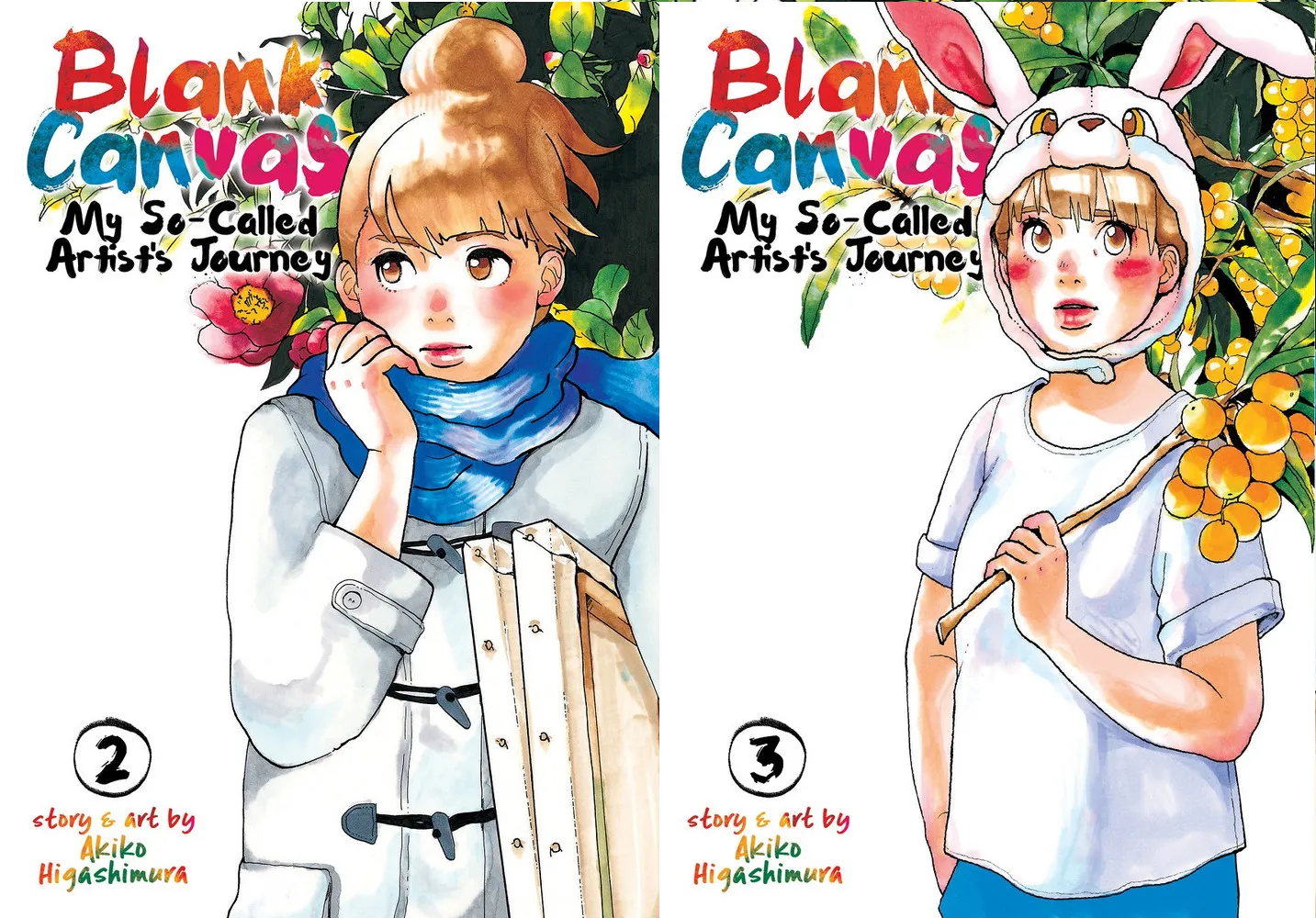This review explores Blank Canvas: My So-Called Artist’s Journey by Akiko Higashimura, reflecting on its raw honesty, tough mentorship, and blend of humor and hardship. I share my personal reading experience from ComicK, highlighting what makes this autobiography inspiring yet occasionally frustrating, from its nostalgic storytelling to its flaws in pacing and artistic detail.
I first read Blank Canvas: My So-Called Artist’s Journey on ComicK, and I’ll be honest it was not the light, breezy read I expected. Instead, it was a strange cocktail of nostalgia, frustration, and admiration.
The site itself made the experience smooth (ComicK really does deliver free and clean reading without the usual clutter), but the story had me pausing, laughing at Akiko’s brutal honesty, and sometimes wincing at her younger self’s immaturity. This wasn’t just a manga about art it felt like sitting in on someone’s raw confessions about growing up, failing, and clawing their way toward their dream.
A Raw Autobiography That Pulls No Punches
One of the first things that struck me was how brutally honest Higashimura is about her younger self. She doesn’t shy away from showing her arrogance, laziness, or tendency to give up too soon. I found it refreshing, even if occasionally annoying almost like watching a younger sibling make the same mistakes over and over while you yell at the page, “Come on, just stick with it!”

That frustration is part of the charm, though. Because when she does learn, when she admits her vulnerabilities, it feels genuine. It’s not a sugarcoated journey of genius; it’s messy, human, and painfully real. And that honesty makes her eventual growth feel earned.
Reading this, I kept thinking about my own younger self times when I walked away from opportunities because I wasn’t ready to face hard truths. In that sense, Higashimura’s journey mirrors anyone’s struggle of stumbling toward adulthood.
The Tough-Love Mentor: Harsh Yet Human
Then there’s Hidaka, her art instructor. Honestly, I wasn’t sure what to make of him at first. He’s strict, relentless, and even borderline cruel with his criticisms. I cringed when I read how he’d hit students on the head with a wooden sword something that would never fly in today’s classrooms.
And yet, beneath that harsh exterior, there’s an undeniable care for his students. The moments where he shows kindness like helping a sick student get home made me re-evaluate him. It’s as if his brutality was matched by a fierce commitment to pushing his students toward growth.
In my own life, I’ve had mentors like this: people who seemed merciless in the moment but whose lessons stuck with me years later. Reading Hidaka reminded me that sometimes tough love, while painful, leaves the deepest imprint.
Humor in Vulnerability
Despite the heavy themes, the manga is funny sometimes laugh out loud funny. Higashimura has a knack for poking fun at her younger self, and I loved those moments of self deprecation. When she sneaks out of class because her ego couldn’t handle criticism, it’s both ridiculous and relatable.
That blend of comedy and vulnerability makes the story approachable. Instead of a lofty autobiography, it feels like a friend telling embarrassing stories over coffee. You laugh, but you also nod in recognition because you’ve been there.
It also prevents the manga from feeling too heavy. Just when the narrative risks drowning in self-pity or nostalgia, humor kicks in and reminds you not to take it all too seriously. That balance is part of what makes it so readable.
The Flaws of Pacing and Detail
As much as I enjoyed the authenticity, I do think the pacing drags at times. Some sections like her repeated failures at entrance exams felt stretched, almost as if the same lesson was being hammered in too many times. I found myself impatient, wishing the story would move forward.
Another small gripe: the art training itself isn’t particularly detailed. If you pick this up hoping to learn technical skills, you’ll be disappointed. It’s more about emotional growth than artistic technique. That’s fine, but at moments I wanted just a little more about her craft, not just her struggles.
Still, these flaws don’t break the story. In fact, they reinforce its “slice of life” feel: meandering, imperfect, and unpolished just like real growth.

Nostalgia and the Weight of Memory
One thing that truly resonated with me was the way present-day Akiko narrates her past. There’s a bittersweet nostalgia throughout, like an adult looking back at a younger version of themselves with both fondness and regret. I could feel the weight of memory in every panel.
It reminded me of flipping through my own old notebooks seeing not just progress, but also the mistakes and embarrassing doodles. There’s something universal about realizing how far you’ve come while still cringing at the road you took to get there.
That wistfulness gives the manga depth. It’s not just a record of her past, but a meditation on how memory shapes identity. And that, to me, elevates it beyond a simple autobiography.
Why This Story Stays With You
At the end of the day, Blank Canvas is less about art and more about becoming an adult stumbling, failing, laughing, and trying again. It’s messy, imperfect, and often frustrating, but that’s exactly why it sticks with you.
What I appreciated most was how much it made me reflect on my own journey. I didn’t always agree with Higashimura’s younger choices, and at times I even rolled my eyes, but that honesty made her story feel alive. It wasn’t polished it was human.
Reading it on ComicK only made the experience smoother, giving me space to fully sink into the story. I left the last page with a mix of admiration, annoyance, and empathy a messy cocktail of feelings that, in hindsight, might be the perfect definition of growing up.
Read more:
- Mahoutsukai no Insatsujo Review Explore Magic Market Fun
- Blood on the Tracks Manga Review Exploring Dark Family Secrets
